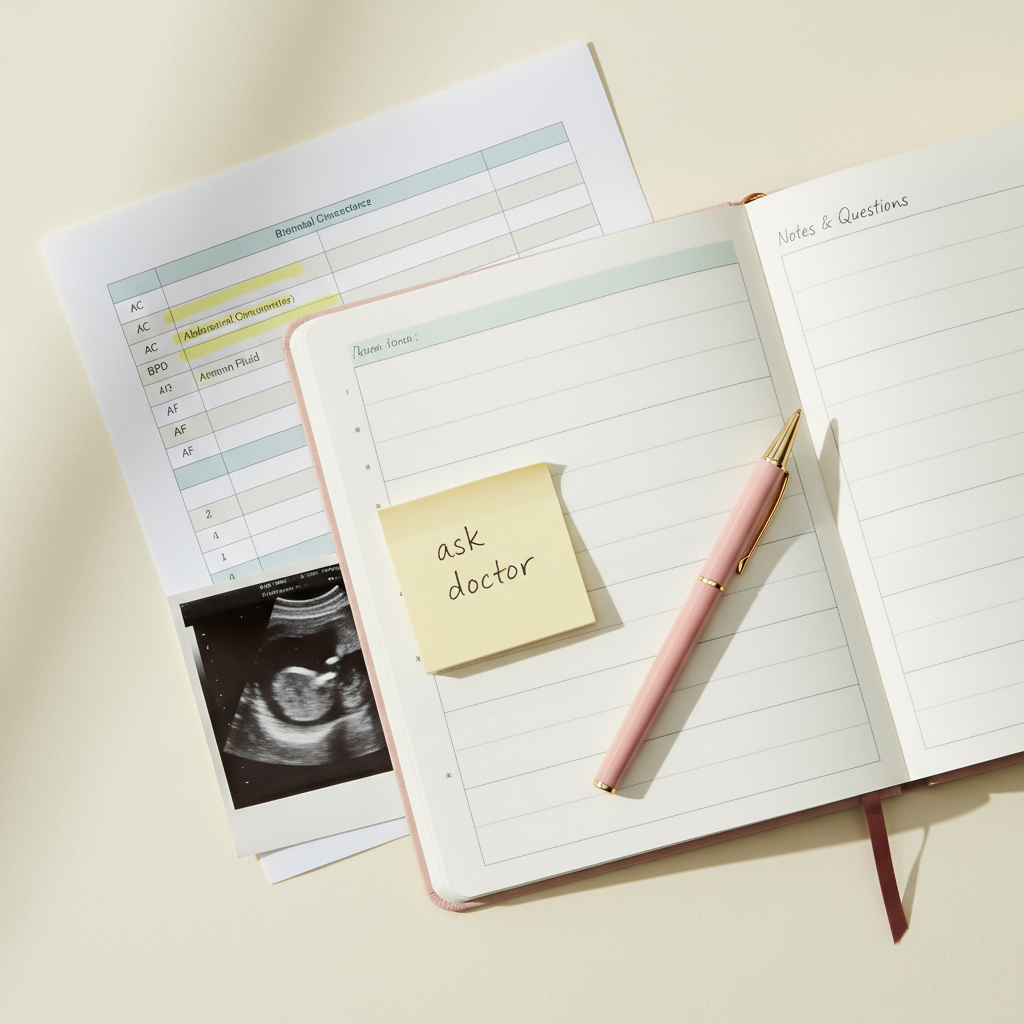
Understanding Medical Terms in Your Prenatal Reports
Pregnancy brings a whole new vocabulary that can sometimes feel like learning a foreign language at your doctor’s appointments. Understanding the medical terminology used in your prenatal care is essential for making informed decisions and feeling confident throughout your pregnancy journey.
Key Highlights
Here’s what you’ll discover about decoding medical terms during pregnancy:
- Learning basic abbreviations like LMP, BP, and FH can make your prenatal reports much clearer
- Understanding ultrasound measurements helps you connect technical data to your baby’s development
- Knowing common pregnancy condition terms reduces anxiety when they come up in conversation
- Familiarizing yourself with pregnancy history terminology helps you better understand how doctors track your care
- Building your medical vocabulary empowers you to participate actively in your healthcare decisions
Understanding Changes: Basic Terminology

During the second trimester, you’ll encounter more specialized medical terminology as your prenatal care becomes more comprehensive. Terms like “gestation” (the time from conception to birth) and “fetus” (your developing baby after the eighth week) will appear frequently in your medical records. When your doctor discusses your baby’s position, they may use terms like “cephalic” (head-down position) or “breech” (bottom-down position), which become particularly important as you approach your due date.
Learning these fundamental terms helps you follow conversations with your healthcare provider without feeling lost or overwhelmed. Many patients find that understanding basic pregnancy vocabulary significantly reduces anxiety during appointments and when reviewing test results. Don’t hesitate to ask your healthcare provider to clarify any terms you don’t understand—medical professionals appreciate patients who take an active role in their care.
Understanding Changes: Medical Shorthand
The abbreviations that populate your prenatal chart have specific meanings that track important aspects of your pregnancy. “LMP” refers to your Last Menstrual Period, the starting point for calculating your due date. “BP” stands for Blood Pressure, a vital measurement monitored throughout pregnancy to detect potential complications. “FH” typically means Fetal Heart rate, the beats per minute of your baby’s heart that providers check at each visit.
Other common abbreviations you might encounter include “EDD” (Estimated Due Date), “FHT” (Fetal Heart Tone), and “US” (Ultrasound). During the middle months of pregnancy, your doctor will start tracking additional measurements as your baby grows. Understanding these shorthand notations helps you follow along in your care and recognize what’s being monitored. Many pregnant women find it helpful to keep a small notebook with these terms and their definitions for quick reference during appointments.
Your Body & Baby: Decoding Ultrasound Reports

Ultrasound reports during your pregnancy headaches second trimester visits contain measurements that might initially seem like a confusing jumble of numbers and abbreviations. “BPD” stands for Biparietal Diameter, which measures the width of your baby’s head. “AC” refers to Abdominal Circumference, an indicator of your baby’s growth and nutrition status. “FL” means Femur Length, the measurement of your baby’s thighbone that helps track skeletal development.
These measurements allow your healthcare provider to monitor your baby’s growth pattern and ensure everything is developing as expected. Second trimester ultrasounds are particularly important for establishing baseline measurements and identifying any potential concerns early. The amniotic fluid level, often abbreviated as “AF” or “AFI” (Amniotic Fluid Index), is also assessed to ensure your baby has adequate protective cushioning and room to move.
Your Body & Baby: Pregnancy Conditions
Understanding terms related to pregnancy conditions can help you stay informed without unnecessary worry. Gestational diabetes mellitus (GDM) refers to high blood sugar that develops during pregnancy and typically resolves after delivery. Pre-eclampsia describes a condition characterized by high blood pressure and signs of damage to other organ systems, usually after 20 weeks of pregnancy. These conditions, while serious, can be managed effectively when detected early.
Your provider may also discuss terms like “IUGR” (Intrauterine Growth Restriction) if your baby is smaller than expected, or “placenta previa” if your placenta is positioned over or close to your cervix. During the 2nd month pregnancy and beyond, your healthcare team will screen for these and other conditions as part of routine care. Remember that most pregnancies progress without these complications, but understanding the terminology helps you participate meaningfully in discussions about your care if concerns arise.
Healthy Living Tips: Building Your Medical Vocabulary

Becoming your own medical translator is an empowering aspect of pregnancy care. Start by asking your healthcare provider to explain any unfamiliar terms during your appointments. Many doctors use medical terminology out of habit and appreciate the opportunity to clarify. Consider bringing a notebook to appointments to jot down new terms and their meanings, or use the notes app on your phone to build your personal pregnancy dictionary.
Online resources from reputable medical organizations can also help you expand your vocabulary. The American College of Obstetricians and Gynecologists (ACOG) and the Mayo Clinic offer excellent glossaries of pregnancy terminology. As you approach your 2ns trimester, your understanding of pregnancy-related medical terms will naturally grow. This knowledge will serve you well not only for your current pregnancy but also for any future pregnancies and general women’s health care.
Healthy Living Tips: Communicating Confidently
Effective communication with your healthcare team is vital for receiving the best possible care during pregnancy. Don’t hesitate to ask questions when something isn’t clear—remember that there are no “silly” questions when it comes to understanding your health and your baby’s development. If you’re particularly concerned about certain aspects of your pregnancy, prepare a list of questions before your appointment to ensure all your concerns are addressed.
Building confidence in medical settings also involves recognizing the importance of your observations about your own body. Tracking your baby’s milestones and noting any unusual symptoms provides valuable information to your healthcare team. Many healthcare providers appreciate patients who take an active role in their care by staying informed and communicating clearly. Remember that supporting your baby’s development includes understanding the language used to describe that development.
Empowering Yourself Through Knowledge
Understanding medical terminology transforms your pregnancy experience from confusion to confidence. By familiarizing yourself with common terms and abbreviations, you become an active participant in your care rather than a passive recipient. This knowledge empowers you to ask informed questions, understand recommendations, and make decisions that align with your pregnancy goals.
Remember that learning medical language is a process that happens gradually throughout your pregnancy. Even healthcare professionals once had to learn these terms, so be patient with yourself as you build your vocabulary. The effort you invest in understanding the language of prenatal care will reward you with greater peace of mind and a more satisfying healthcare experience as you prepare to welcome your baby.
Sources
American College of Obstetricians and Gynecologists – Glossary of Terms
Mayo Clinic – Prenatal Care: 1st Trimester Visits
National Institute of Child Health and Human Development – Tests and Monitoring During Pregnancy
MedlinePlus – Fetal Development
Office on Women’s Health – Prenatal Care and Tests
